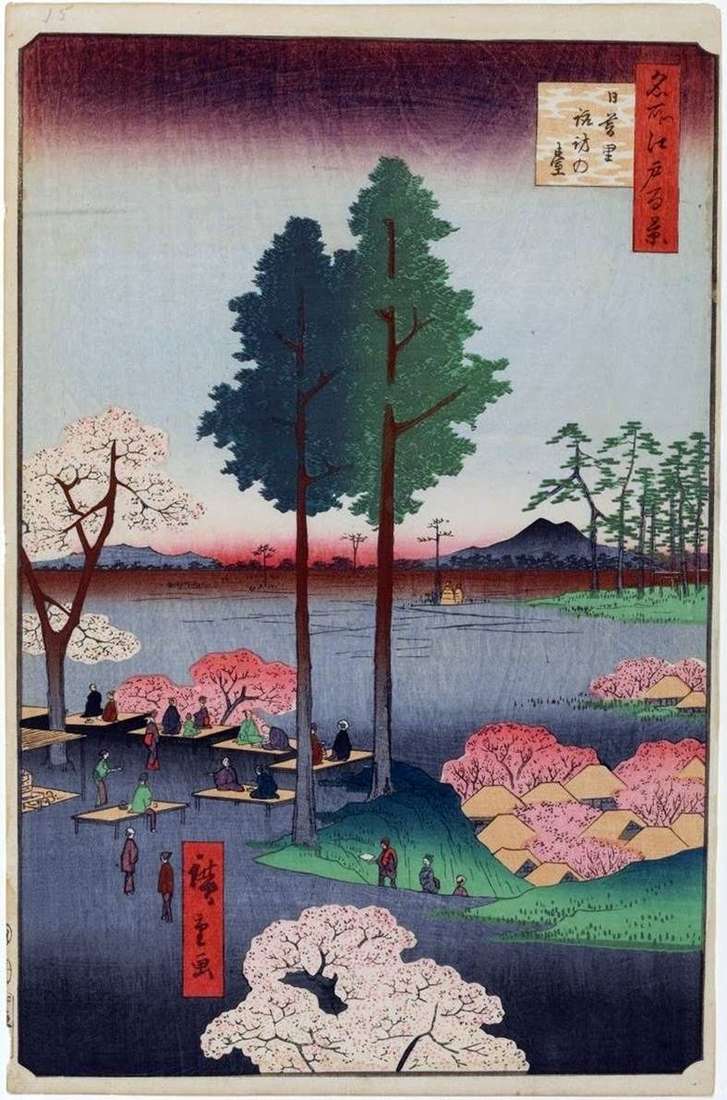
The Shinto shrine of Suamemedzin was built at 1205, it was considered the guardian of two adjoining areas – Janaka and Nippori. From it opened a magnificent view of the village of Nippori, stretching from the south of the gate of the temple of Janak Kannoji to the elevation of Suva, where the sanctuary of Suwameji was. The temple itself does not depict Hiroshige, showing only the garden adjacent to it. A rather steep slope leads also to the villages of Asakusa and Mikavadzim, drowning in blooming cherry blossoms. Behind the rice fields, in the distance on the left rise the Nikko mountains and on the right – the two-headed Nuku Bayama. Suva’s sublime attracted a huge number of people who enjoyed cherry blossoms, as shown in the Hiroshige engraving.
In the gardens, flowers bloomed alternately throughout the year. It should be noted that often the artist did not follow the real proportions and outlines of mountains, it was important not so much for topographic accuracy as for the recognition of the terrain, which evokes a number of associations among contemporaries. In the south of the temple complex of Suvamezin was the temple of Dzekoin, famous for its beautiful winter landscapes. The second version of this engraving is redesigned. The dark blue strip in the foreground turns into the blue color of the road, continued in the background. In the first version, the distant plan has a green living. The dark red sky on the horizon turns into a dark blue strip of bokasi at the top.
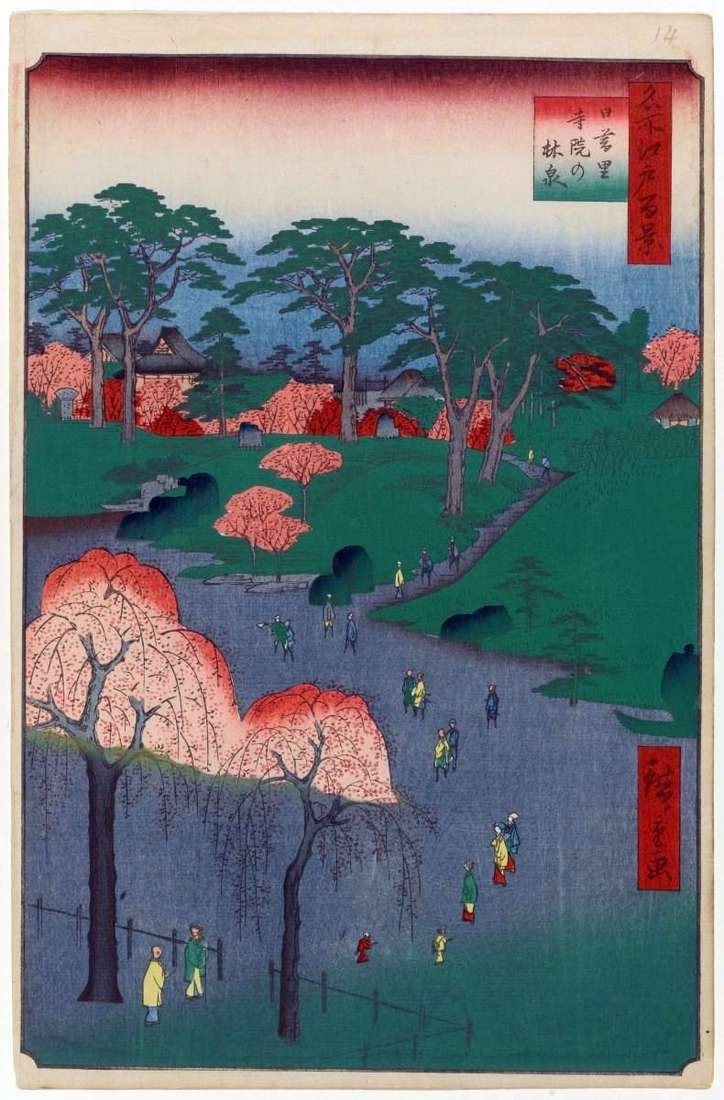 Monastery gardens in Nippori by Utagawa Hiroshige
Monastery gardens in Nippori by Utagawa Hiroshige Dam on the Otonasigawa River in Ojzi by Utagawa Hiroshige
Dam on the Otonasigawa River in Ojzi by Utagawa Hiroshige Sanctuary Motohatiman in Sunamura by Utagawa Hiroshige
Sanctuary Motohatiman in Sunamura by Utagawa Hiroshige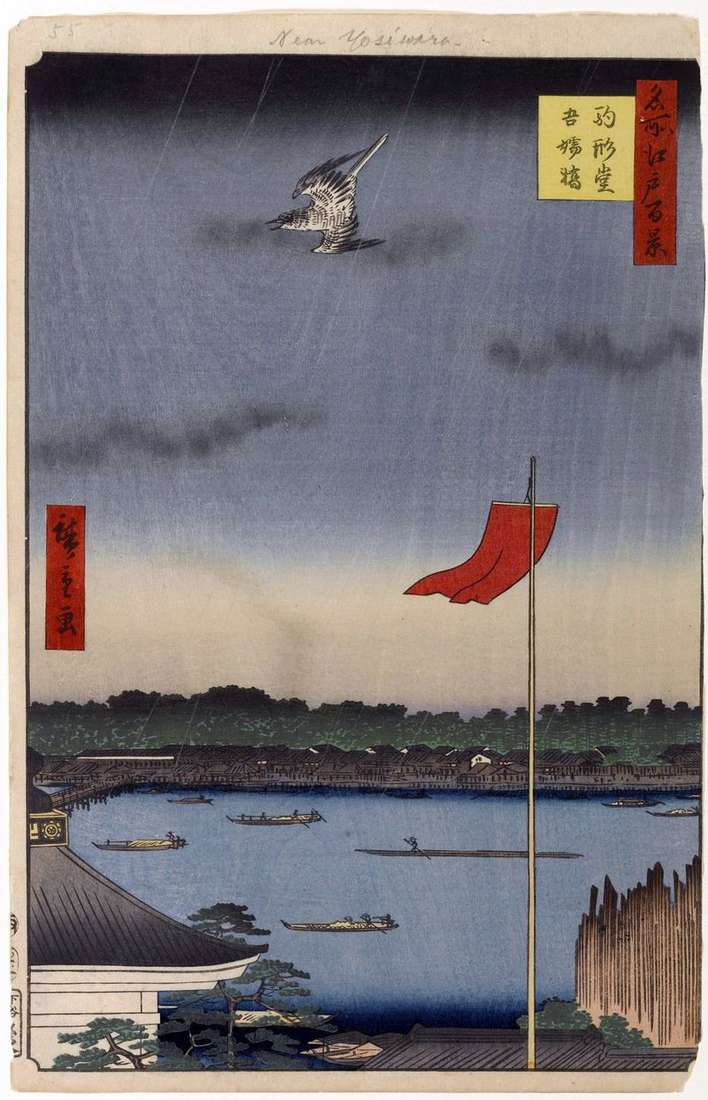 Komakatado Temple and Azumabashi Bridge by Utagawa Hiroshige
Komakatado Temple and Azumabashi Bridge by Utagawa Hiroshige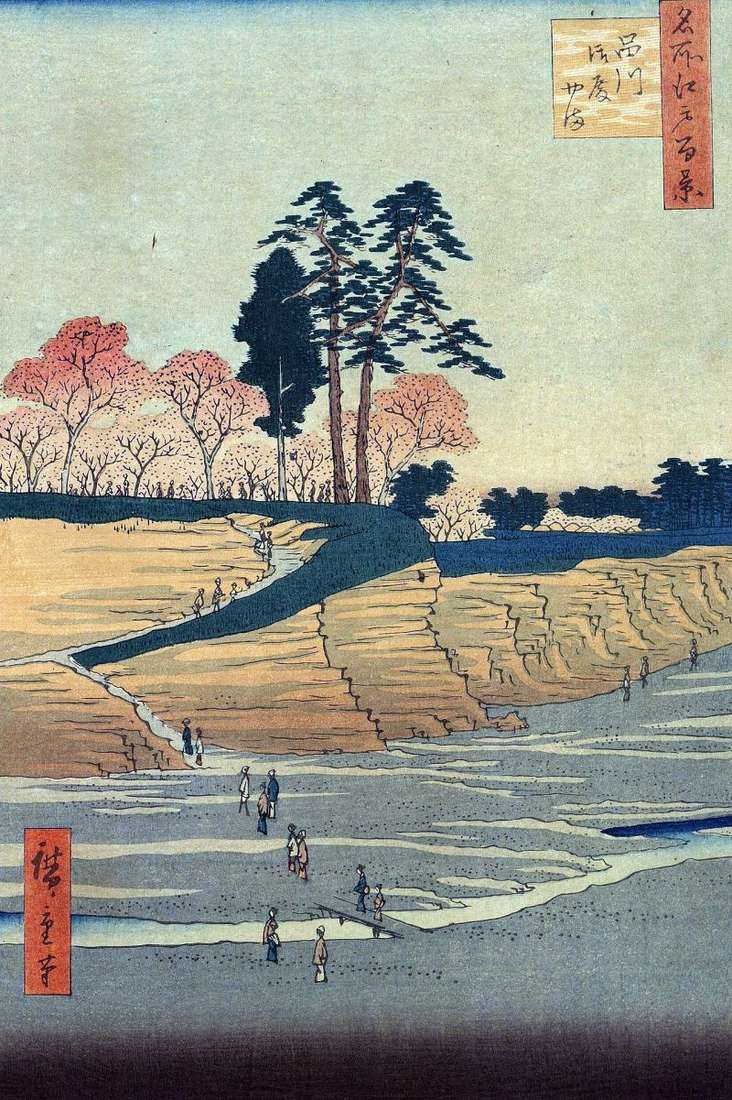 Shinagawa, Mount Gotenyama by Utagawa Hiroshige
Shinagawa, Mount Gotenyama by Utagawa Hiroshige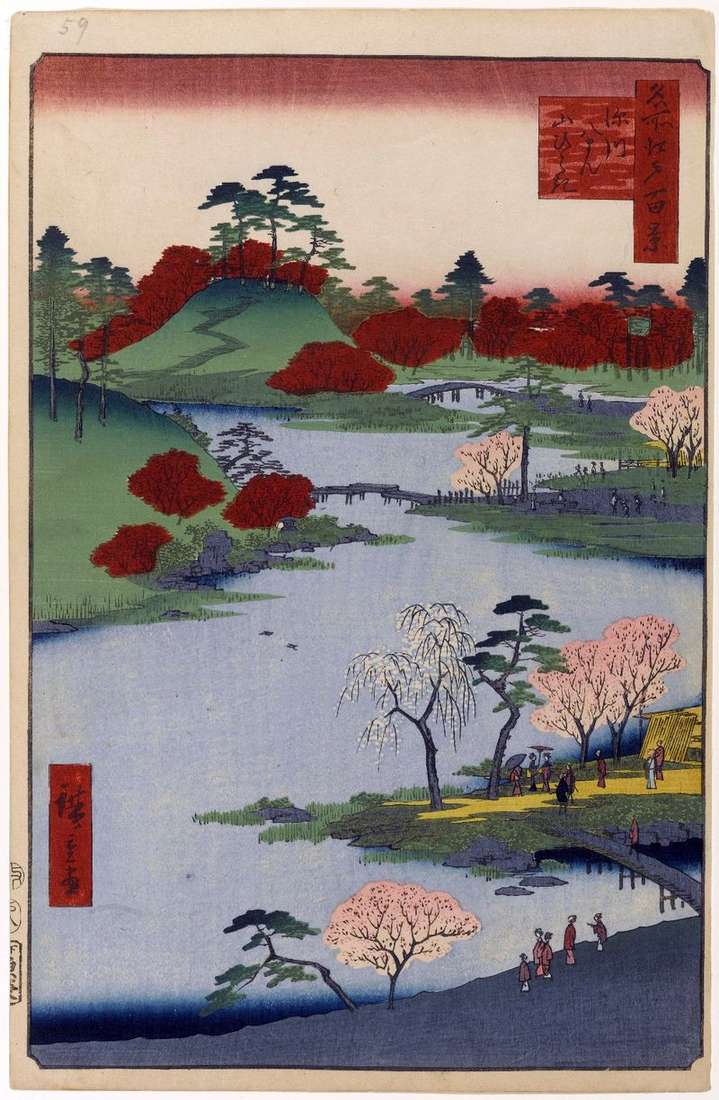 Opening of the mountain in the sanctuary of Hatiman in Fukagawa by Utagawa Hiroshige
Opening of the mountain in the sanctuary of Hatiman in Fukagawa by Utagawa Hiroshige Sanctuary Massaki on the Utigawa River, the village of Sekiya no sato and the sanctuary of Suilzin no Mori by Utagawa Hiroshige
Sanctuary Massaki on the Utigawa River, the village of Sekiya no sato and the sanctuary of Suilzin no Mori by Utagawa Hiroshige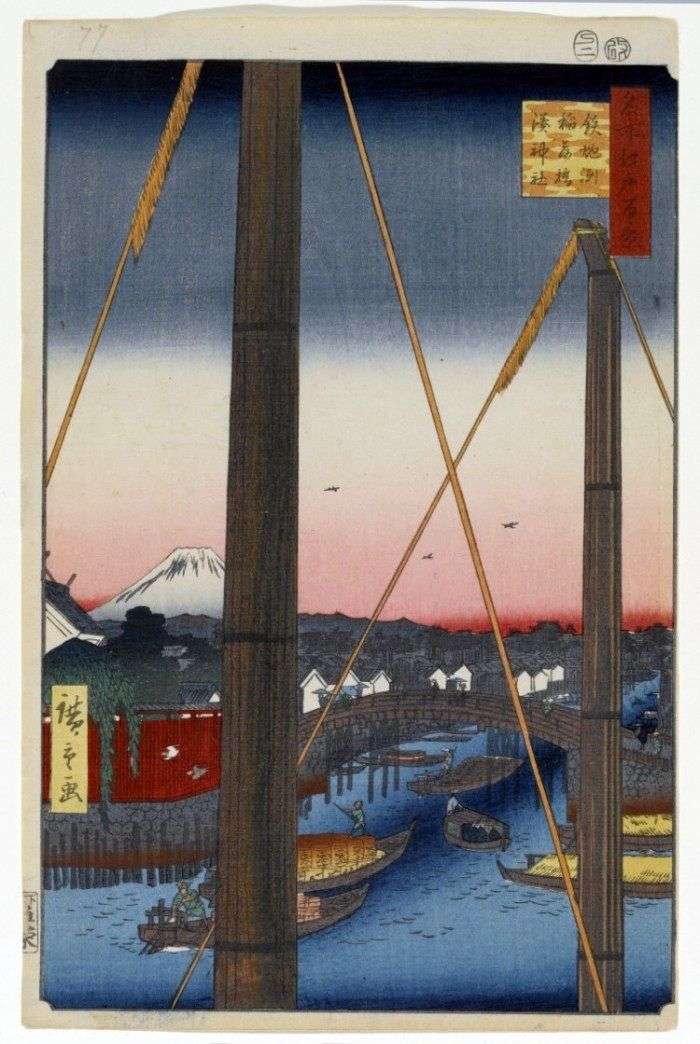 Inari-basi bridge in Teppozu, the sanctuary of Minato-jinja by Utagawa Hiroshige
Inari-basi bridge in Teppozu, the sanctuary of Minato-jinja by Utagawa Hiroshige